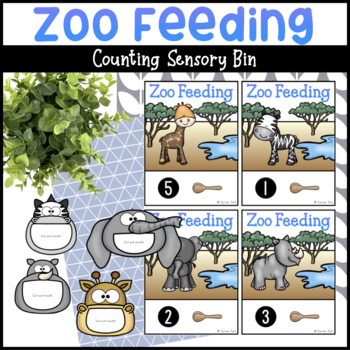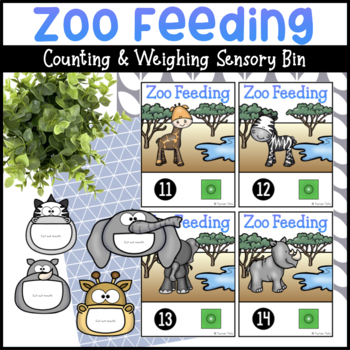Zoo Animals Counting Sensory Bin - Zoo Math Activity for Zoo Animals
- PDF
What educators are saying
Also included in
- Don't just let your preschoolers monkey around during your zoo theme; incorporate these zoo activities for extra learning! Match letters to animals on the zoo map, build and draw a map of your own zoo, practice letter sounds with monkeys, write the alphabet with penguins, match and create animal traPrice $19.00Original Price $56.25Save $37.25
Description
Step into the wild world of zoo math and imagination with this zoo animals counting sensory bin! Are you ready to embark on a thrilling adventure as a zookeeper? Feed the hungry zoo animals and sharpen your counting skills in the most engaging way possible. With this zoo sensory bin, your little ones will dive into a world of sensory bin exploration and mathematical fun!
Picture this: adorable zoo animals eagerly waiting to be fed in their natural habitat. Tape their head printouts onto tin cans or wipe containers and prepare for a feeding frenzy!
As you fill the sensory bin with lush green-dyed rice, watch as it transforms into a vibrant field of grass, ready to satisfy the appetites of our hungry friends. Each scoop of rice becomes a delightful morsel for the giraffe, rhino, zebra, and elephant.
But wait, there's more excitement in store with this zoo math activity! Draw a card and behold the challenge: count the corresponding number of scoops of "grass" needed to nourish the pictured animal.
With every scoop, your child's counting abilities will soar to new heights while they immerse themselves in the zoo's sensory world. The joy of feeding these adorable zoo animals will keep them captivated for hours on end.
So, why wait? Let the feeding frenzy begin! Add this zoo animal counting sensory bin to your cart and unleash the wild fun of learning and play. Prepare for a roaring good time that will leave your little zookeepers begging for more!
Here's what you'll get (in both color and black & white):
- zoo animal heads (giraffe, zebra, elephant, and rhino) - come in small size for tin cans and large for 4" sanitizing wipes containers
- 40 zoo counting cards with scoops and numbers 1-10
- 40 zoo counting cards with scoops and numbers 11-20
- 40 zoo counting cards with cubes and numbers 1-10
- 40 zoo counting cards with cubes and numbers 11-20
Materials needed for this zoo counting activity:
- sensory tub with green-dyed rice
- 4 tin cans or sanitizing wipes containers
- spoons/scoops
- lamination
⭐️ ⭐️ ⭐️ BUNDLE & SAVE ⭐️ ⭐️ ⭐️
Zoo Activities for Preschoolers
You may also like…
❤️ More THEMED PRESCHOOL ACTIVITIES!
Copyright © Turner Tots.
Permission to copy for single classroom use only.
Please purchase additional licenses if you intend to share this product.




